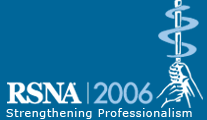
Abstract Archives of the RSNA, 2006
SSM11-04
The Clinical Utility of the Fluoroscopic Small Bowel Follow-through (SBFT) and Comparison with Computerized Tomography (CT)
Scientific Papers
Presented on November 29, 2006
Presented as part of SSM11: Gastrointestinal (Fluoroscopy)
Jeffry S. Kriegshauser MD, Presenter: Nothing to Disclose
Amy Kiyo Hara MD, Abstract Co-Author: License agreement, General Electric Company
Stephen A. Nelson, Abstract Co-Author: Nothing to Disclose
Orla Buckley, Abstract Co-Author: Nothing to Disclose
Jonathan A. Leighton MD, Abstract Co-Author: Nothing to Disclose
To determine the positive yield of SBFT by indication and compare results with CT.
The electronic records of 500 consecutive patients (311F, 189 M, average age of 62 + 17 yrs) who underwent a SBFT from January-June 2003 were reviewed. Clinical indications included: 1) obstruction, 2) suspected inflammatory bowel disease (IBD), 3) abdominal pain only, 4) obscure GI bleeding (OGIB), 5) UGI linked (added to an UGI performed for predominantly esophageal or gastric symptoms), and 6) other (e.g. bloating, weight loss, constipation.) The SBFT findings were graded as positive or negative and when positive, the finding was graded based on pertinence to the indication. CT findings performed within 3 months of the SBFT were also analyzed and compared.
A positive SBFT pertinent to the indication was found in 69/500 (14%) patients. The indications with the greatest positive yield by SBFT were obstruction (30/109, 28%) followed by suspected IBD (33/165, 20%). Indications with a low positive yield at SBFT included abdominal pain only (2/58, 3%), OGIB (1/83, 1%), UGI linked (0/33, 0%), and other (3/52, 6%).
243 CTs were performed within 3 months of SBFT. For all indications, there was no significant difference between CT and SBFT for findings in the small bowel. Pertinent small bowel findings detected by CT and not detected by SBFT or vice versa were found in 5-7 % of patients. CT detected significantly more pertinent findings outside of the small bowel (CT 25% vs 11% for SBFT, p=.008).
SBFT has the greatest yield in the evaluation of obstruction or suspected IBD. SBFT is rarely positive in the evaluation of abdominal pain only, OGIB, or when performed for mainly esophageal or gastric symptoms. For all indications, CT was statistically equivalent to SBFT for small bowel findings, while providing significantly more additional information outside the small bowel.
SBFT has almost no utility for evaluating OGIB, abdominal pain only, or when added to an UGI without other reason. For most indications, CT can replace the SBFT.
Kriegshauser, J,
Hara, A,
Nelson, S,
Buckley, O,
Leighton, J,
The Clinical Utility of the Fluoroscopic Small Bowel Follow-through (SBFT) and Comparison with Computerized Tomography (CT). Radiological Society of North America 2006 Scientific Assembly and Annual Meeting, November 26 - December 1, 2006 ,Chicago IL.
http://archive.rsna.org/2006/4431755.html

